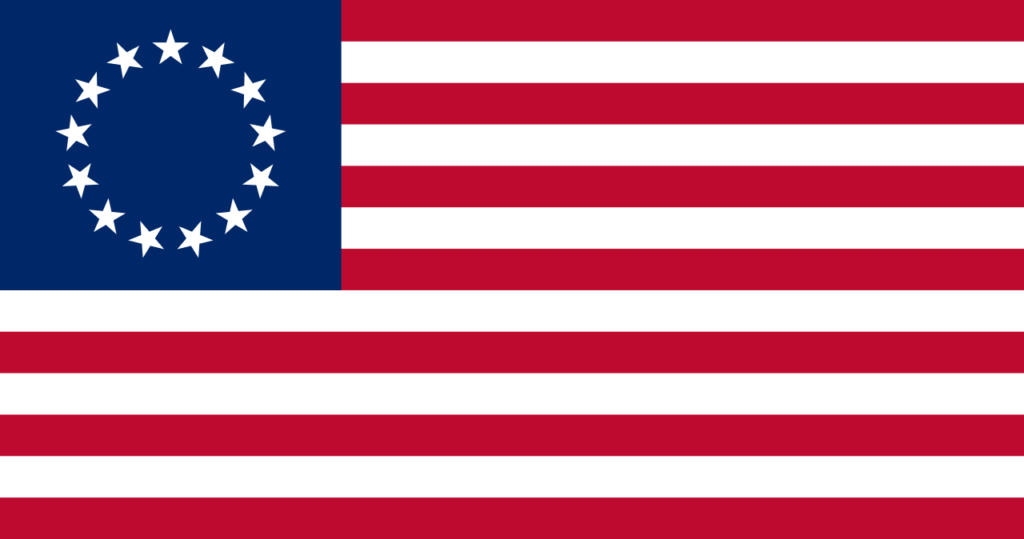A Look Back at the Adoption of Our National Flag
It was nearly a year after the 13 American colonies declared their independence from Great Britain — 247 years ago today — that the United States flag was adopted. On Saturday June 14 — meeting at Independence Hall in Philadelphia — the Continental Congress passed a resolution that represented the unity and determination of the American colonists in their fight for freedom from British tyranny. This action by Congress was the impetus for the flag we proudly fly today.

By DevinCook / Created by jacobolus using Adobe Illustrator, Public Domain
https://commons.wikimedia.org/w/index.php?curid=733590
The Flag Resolution
On June 14, 1777, the Second Continental Congress adopted the first Flag Resolution, setting forth the official design and symbolism of the flag of the United States of America. The resolution proclaimed, “Resolved, That the flag of the thirteen United States be thirteen stripes, alternate red and white; that the union be thirteen stars, white in a blue field, representing a new constellation.”
The Design
The flag’s design was relatively simple. It consisted of thirteen alternating red and white stripes, representing the original thirteen colonies. In the upper left corner, or canton, a blue field held thirteen white stars arranged in a circular pattern, symbolizing a unified nation.
The Symbolism
The symbolism embedded within the flag’s design was rich with meaning. The thirteen stripes represented the equal importance and unity of each colony in the pursuit of freedom. The stars, arranged in a circle, represented a new constellation, signifying the birth of a new nation. This symbolism embodied the spirit of revolution and the belief in a brighter future for the American people.
Evolution of the Flag
As the United States grew and additional states joined the Union, the flag evolved. With each new state’s admission, a star was added to the flag, while the stripes remained at thirteen, symbolizing the original thirteen colonies. This evolution showcased the nation’s commitment to both unity and expansion.
A Proud Legacy
The adoption of the U.S. flag in 1777 laid the foundation for Flag Day, a commemoration of this historic event that is celebrated annually on June 14. Flag Day serves as a reminder of the enduring principles upon which the United States was founded and honors the sacrifices made in pursuit of freedom and independence.
* * * * * * * * * * * * * * * * * *
So there you have it. The adoption of the U.S. flag in 1777 was a significant moment in American history, signaling the unity and resolve of the thirteen colonies. Through its design and symbolism, the flag represented the hopes and aspirations of a young nation striving for independence. Today, as we proudly display our star-spangled banner, let us remember the spirit of those who fought for the freedoms we cherish and commemorate the birth of our great nation.
By Steven Roberts



